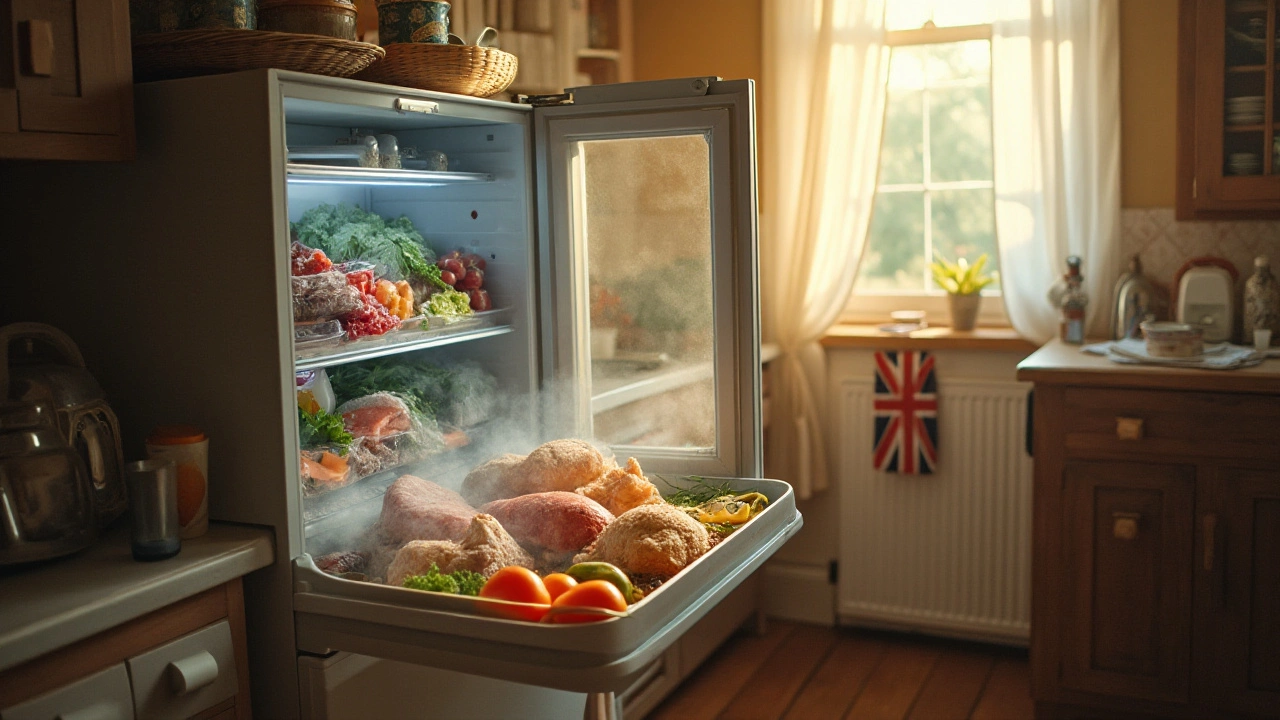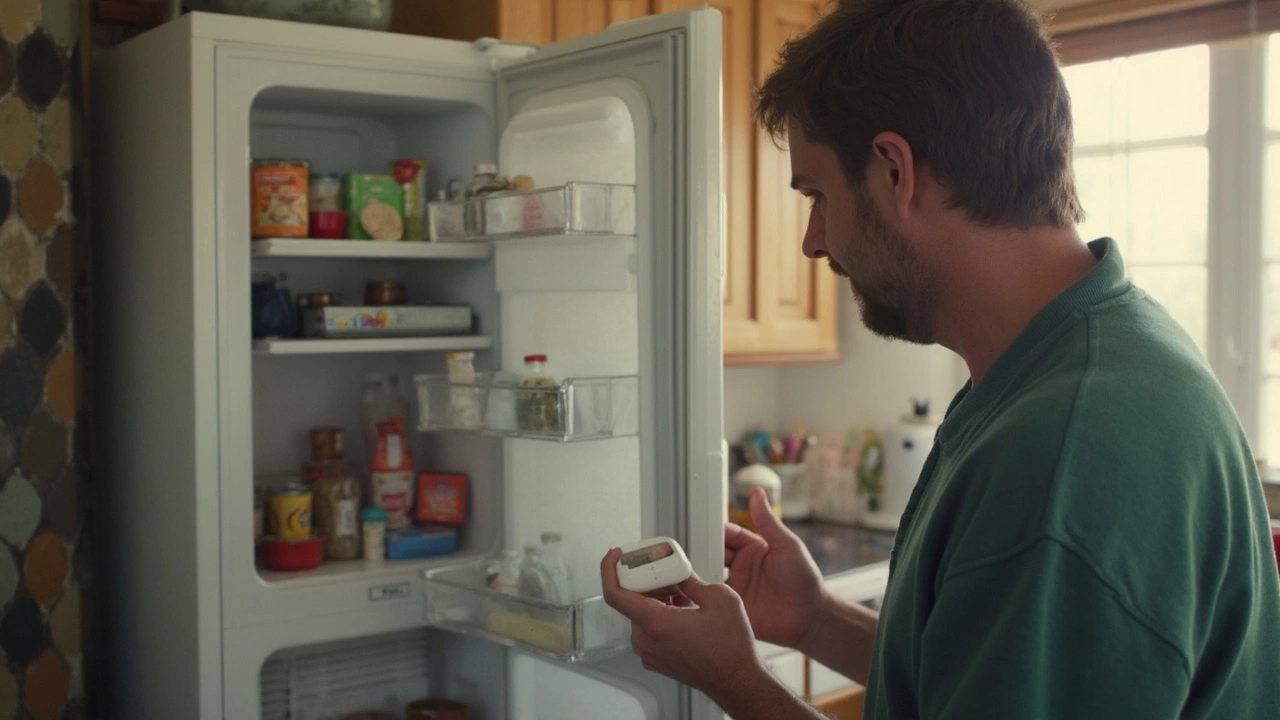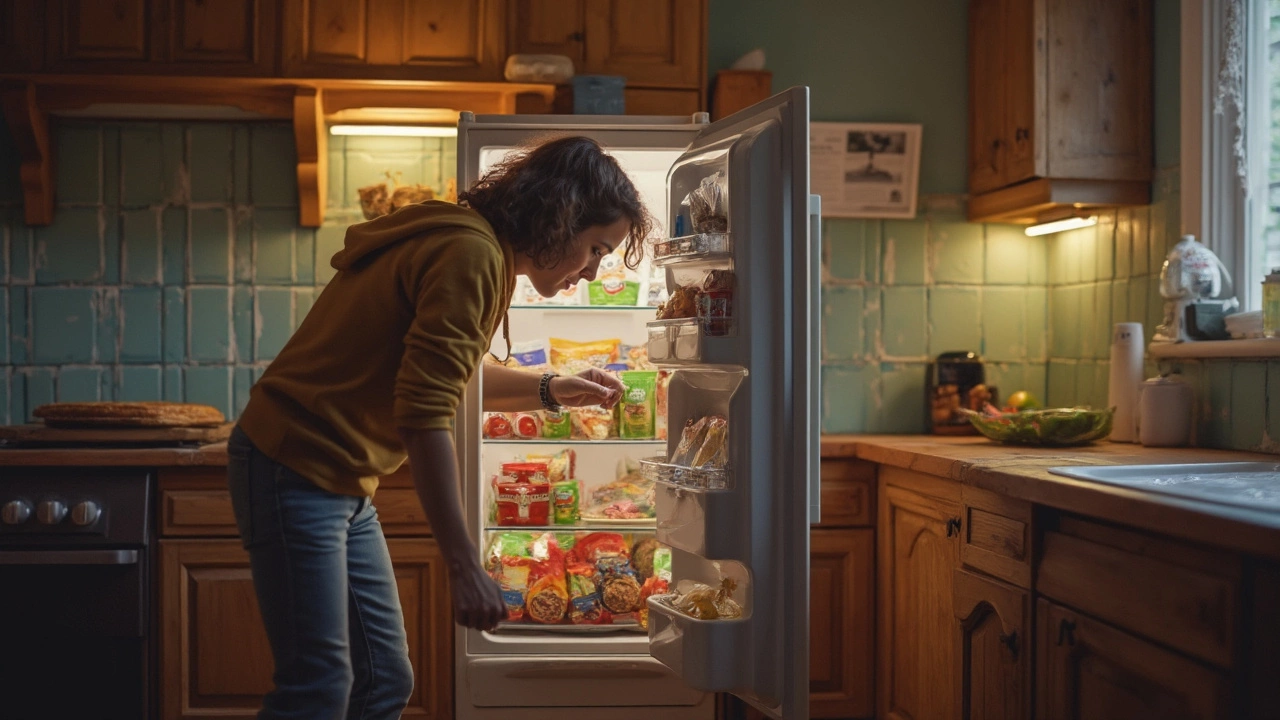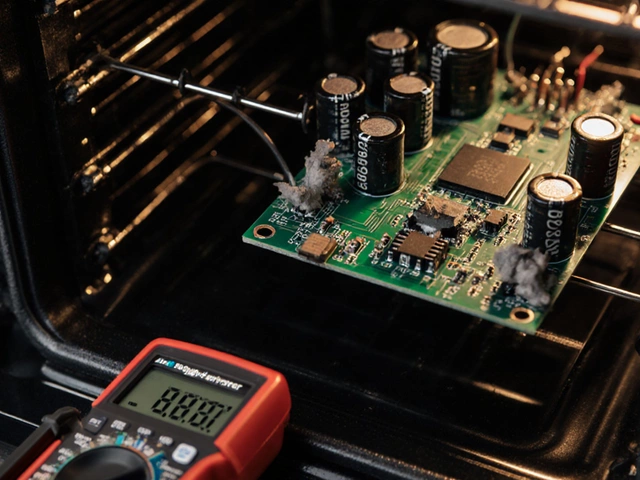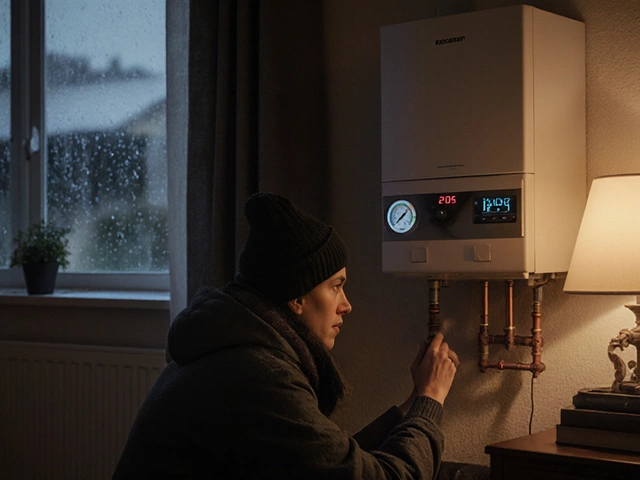There are few things more alarming than realizing your freezer has stopped working, especially when it's filled to the brim with food. The dread of spoiled food can hover like a dark cloud. So, is the food still safe to eat if your freezer takes an unexpected break? The answer isn't a simple yes or no but lies within understanding a few key points about food safety and temperature.
Delving into how foods behave when there's a temporary lapse in freezing conditions allows you to make better decisions. Armed with knowledge, you'll be able to distinguish between what should be tossed and what can be saved. Let's explore the nuances of food safety related to freezer malfunctions and dig into some insightful repair tips along the way.
- Understanding Freezer Malfunctions
- The Science of Food Preservation
- Assessing Food Safety After an Outage
- Storage Tips During Malfunctions
- Signs It's Time for a Repair
- Practical Repair Solutions
Understanding Freezer Malfunctions
When your freezer suddenly decides to take a nap, it's a scene no homeowner enjoys. From watching that tub of ice cream start to turn into soup to worrying about the longevity of your meats and veggies, a malfunction can throw a wrench into your well-laid plans. Freezers are typically trusty appliances, but when they fail, it’s crucial to understand what's going on under the hood. Freezer malfunctions can be due to a myriad of reasons: a faulty thermostat, an overworked compressor, or even a door that's accidentally left ajar. Sometimes, it could be as simple as a power surge disrupting the delicate balance that keeps your frozen goodies safe. Understanding these potential pitfalls can be half the battle won.
A malfunctioning freezer isn’t just about spoiled food—it can actually impact your wallet and wellness. Let's dive into each of these malfunction reasons in greater detail. A defective thermostat might cause the temperature inside the freezer to fluctuate wildly. This erratic behavior can spell doom for your perishables, causing them to defrost and refreeze, which compromises their integrity. Did you know that freezers should ideally maintain a consistent temperature of -18°C (0°F) to ensure food safety? Anything less than that can invite bacterial growth and food spoilage. Now, let’s consider the compressor. This humble part is the workhorse of the freezer, operating tirelessly to circulate refrigerant and draw warmth out of the unit. If it becomes defective or overheats, it can disrupt the cooling process altogether.
What about something as mundane as a door left open? It might seem trivial, but a slightly open door is an open invitation for warm air to creep in. It triggers frost buildup that can restrict airflow within the freezer. In such scenarios, even the best compressor may find itself fighting a losing battle against rising temperatures. According to experts at Consumer Reports, "Regular maintenance and proper usage can extend the life of your freezer significantly, ensuring your frozen goods remain safe." Hence, recognizing these symptoms at an early stage and adopting some preventive measures can spare you from a sudden culinary catastrophe.
For those curious about the figures, the cost of energy wasted due to a malfunctioning freezer can be substantial. On average, a poorly functioning freezer can consume 10-15% more energy. The effect on your electricity bill isn't trivial, and it's a hidden cost that many fail to consider. Don't forget the environmental impact as well. Energy inefficiency contributes to increased greenhouse gas emissions which have far-reaching consequences for our planet. Remember, regular checks can help nip potential issues in the bud, which is a smart strategy both for saving your food and your finances. Proper freezer repair can ensure that your malfunction becomes a distant memory and your icebox returns to its chilly duties without much ado.
The Science of Food Preservation
Freezing is a marvel of modern food preservation, revolutionizing how we store food for extended periods. The basic principle behind it is simple: by lowering the temperature of food, bacterial growth is effectively slowed down or halted entirely. Temperatures at or below 0°F (-18°C) are typically necessary to pause harmful bacteria activity. This temperature threshold is central to keeping your beloved supplies from spoiling during a freezer malfunction. Yet, it's not just the cessation of bacterial activity that matters — protein structure and texture preservation are equally key elements.
When proteins in food freeze, their structures change. This change helps maintain the texture when they're subsequently thawed, which is why properly frozen food often tastes much fresher than chilled counterparts. Also, remember that certain enzymes can remain active even at freezing temperatures, which can lead to flavor changes over time. For instance, vegetables might still undergo slight fades in color or taste if enzymes aren't inactivated by blanching before freezing. As ice crystals form within the food, proper packing and sealing help in slashing freezer burn — a common but avoidable phenomenon that can mar taste and texture.
"Food stored at or below 0°F will remain safe indefinitely, although the quality diminishes over time," — U.S. Food and Drug Administration (FDA).
Understanding these mechanisms opens up a broader perspective on why some foods fare better during unexpected freezer repair needs than others. For instance, foods high in water content, like fruits, often fare poorly if temperatures fluctuate because the expanding ice crystals disrupt cell walls, leading to mushiness. Meanwhile, denser or fattier items like meats handle a brief thaw and refreeze cycle better, retaining most qualities if reprimed quickly.
Comprehension extends into ethical food practices as well; understanding food preservation helps mitigate food waste. By being mindful of freezers' limits and the science behind them, you not only prolong usability but tap into a sustainable practice in your kitchen. Investing in thermometers to regulate and maintain freezing conditions garners dividends toward safety and quality during temporary malfunctions. Basic awareness aids in identifying which foods can undergo a second chill without substantial loss, reshaping how we approach food storage in unprecedented but informative ways.
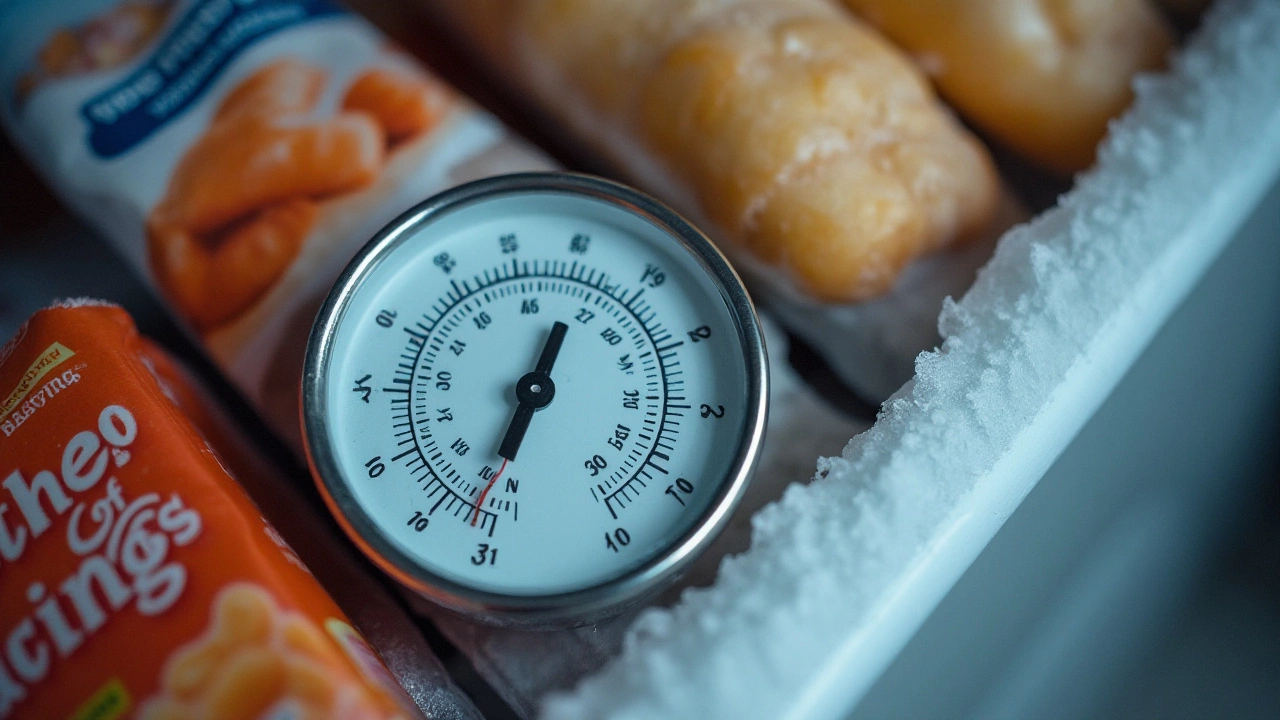
Assessing Food Safety After an Outage
Facing the uncertain aftermath of a freezer malfunction requires a bit of detective work to decide what can safely stay and what must go. The key aspect to consider is how long the freezer has been without power and the temperature it has maintained during that period. Ideally, a fully stocked freezer holds its temperature longer, typically maintaining freezing conditions for about 48 hours if the door remains closed. Partially filled, this time can be halved, making it crucial to conduct a thorough assessment as soon as you notice the malfunction.
Temperature is the most critical factor when looking at food safety here. Foods begin to thaw once the temperature rises above 0°F (-18°C). A safe rule of thumb is if the food still contains ice crystals or feels refrigerator-cold, it could be safe to refreeze or cook immediately. It's fascinating how some foods, like hard cheeses and vegetables, can withstand slight changes in temperature better than others. Meats and dairy products, on the other hand, don't fare as well and can develop harmful bacteria if left at unsafe temperatures for too long.
Trusting Your Senses and Thermometer
Your senses become valuable allies in this detective endeavor. Smell and touch are fantastic guides. If any food smells off or has an unusual texture, it's safer to toss it. Still, not all harmful bacteria affect food's smell or texture. That's where a thermometer steps in as a reliable assistant. A quick temperature check can prevent foodborne illnesses. It's handy to invest in a fridge and freezer thermometer; they're essentially insurance for your kitchen. Foods that have exceeded 40°F (4°C) for more than two hours should be approached cautiously.
"When in doubt, throw it out." This timeless advice from the USDA encapsulates the need for caution over thriftiness. Safety should always come first.
Some folks find it helpful to keep a 'power outage checklist' specifically for their freezer. Such a checklist could include steps like checking items for security seals or packaging that's still intact and noting down the duration of the power loss. Another tip from those who frequently navigate this issue is to categorize freezer contents by how sensitive they are to temperature fluctuations. You might place meats in a particular section and foods like bread or juices, which don't mind slight thawing as much, elsewhere. This makes it easier to perform a quick check when the power comes back.
Storage Tips During Malfunctions
When a freezer malfunction strikes, it’s crucial to act swiftly to preserve the safety and quality of the stored food. First and foremost, resist the urge to open the freezer door repeatedly. Each time you open the door, cold air escapes, hastening the warming process inside. Keeping the door shut maintains a cold environment, which can potentially keep food safe for 24 to 48 hours. Once you identify a problem with your appliance, whether it's complete shutdown or partial cooling, your immediate response can make a significant difference to the food within.
If the gamble of waiting isn’t on your side, another option is to transfer perishable items. Utilizing ice chests as temporary storage can be effective. Quickly wrap frozen goods in insulating materials like newspapers or blankets for extra protection against temperature rises. Strategically arrange items in an insulated cooler along with sufficient ice packs or dry ice. Dry ice, found at various grocery stores, can effectively maintain lower temperatures. However, understand the risks involved in handling it, as it can cause burns. Educate yourself about safe handling techniques before attempting to use dry ice.
Another tip involves separating food as the thaw sets in. Foods with a strong structural integrity, such as unopened frozen dinners or dense meats, can withstand short periods of higher temperatures, whereas others, like seafood or dairy products, require prompt stabilization in consistent cold conditions. It's advisable to orient the food in your freezer; placing heavier, more solid items on top will help in maintaining an internal cold mass, especially when used in coolers. Avoid microwave or oven thawing unless you plan to consume the food immediately. The balance between freezing and thawing affects both flavor and nutritional value, so stay informed about what can or cannot be refrozen safely.
An alternative, if available, is to reach out to friends or family with available freezer space. This solution isn't about convenience alone; it can mean the difference between a manageable bout of inconvenience and the catastrophe of full-scale food loss. Seek cold storage from those in your community. Such may involve dining establishments as they typically possess large cold storage units. If approaching businesses, clarity is vital. Specify your requirement and inquire politely, as they may be able to temporarily accommodate your frozen goods.
"Freezer storage during a power outage or malfunction is all about strategic planning", says food safety expert Susan Reid, "maintain compartment integrity by avoiding unnecessary engagement with the freezer unless prompted by necessity, and act preemptively by knowing your neighbors to establish alliances before emergencies occur."
When the temperature returns to normal or after a successful repair, always inspect all the food items. Check for ice crystals on food surfaces as a sign they remained partially frozen and safe. If any food has a suspect odor or unusual texture upon thawing, it might be best to discard it. Always remember that food safety must be the priority as compromised cold storage can lead to harmful bacterial growth.
Understanding these fundamental food safety protocols and clever use of available resources can help mitigate the impacts of a freezer malfunction. Ultimately, effective prior planning is key to navigating through such setbacks, ensuring minimal food waste and preserving your peace of mind in the face of a kitchen crisis.

Signs It's Time for a Repair
A malfunctioning freezer can be a source of stress, especially if it's a key component in your food storage plan. Recognizing the signs of trouble early can mitigate losses and save your groceries from spoilage. One clear indicator of an issue is persistent temperature drops or inability of the freezer to maintain the consistent cold required for food safety. If you've noticed your frozen food is starting to thaw or feels softer than it should, it's time to investigate further.
Another sign that repair might be necessary is excessive frost build-up. Although a little frost is normal, an overwhelming layer can suggest that your appliance's defrost system isn't working as it should. This could be due to a faulty defrost thermostat or heater. When the freezer's self-regulation system falters, it's not just energy inefficient, but also a threat to your food's safekeeping.
Unusual noises, clanking, or humming that persists may also indicate your freezer is struggling. These sounds often arise from mechanical problems such as damaged motors, compressors, or fans. A well-functioning freezer operates quietly, and any deviation from silent operation deserves attention. Coupled with these auditory signs is the presence of water pooling, which can indicate a broken or blocked drain tube.
If you’re experiencing inexplicable power outages with your freezer, where the unit runs intermittently, that’s a serious red flag. Often, this behavior signals electrical issues, either within the freezer itself or with the connection to your household power supply. Always check the power cord and socket, but persistent problems likely require professional intervention.
An expert in home appliance repair once shared, "Routine maintenance can often catch small problems before they become big ones. With freezers, regular checks can prevent about 80% of sudden failures."
Lastly, the age of your freezer can be a determiner. Most freezers have a lifespan of about 10 to 20 years. If yours is closer to this range and shows signs of wear and tear, replacing components could extend its life and improve stored foods' safety. When repairs happen frequently, though, it may be time to consider a new model, possibly even one more energy-efficient to save on utility bills.
Here's a quick table to sum up some data on when it's time to repair versus replace:
| Warning Sign | Repair | Replace |
|---|---|---|
| Temperature Fluctuations | Yes | No |
| Excessive Frost | Yes | No |
| Unusual Noises | Yes | No |
| Age Over 15 Years | Maybe | Yes |
| Frequent Repairs | Sometimes | Yes |
Practical Repair Solutions
When your freezer stops working, it can feel like anarchy in your kitchen. But don’t panic just yet. With some common sense and a little know-how, you can often restore your freezer to its cold, reliable self. The first step is diagnosing the problem. If your freezer isn’t running at all, check the power supply. Make sure it’s plugged in and that the circuit breakers haven’t tripped. If those are fine, inspect any visible cords for damages or fraying. These simple checks can often save you a service call and maybe your groceries.
If the power's on, but the freezer doesn't seem cold enough, the issue might lie with the temperature settings. Freezers should ideally sit at zero degrees Fahrenheit (-18 degrees Celsius). Anything higher could risk your food safety while working your appliance overtime. Adjust the settings and wait a few hours to see if temperatures stabilize. And if that's not the culprit, try cleaning the coils. Over time, dust and grime can build up, preventing proper cooling. Don't forget the back of the freezer where these coils usually reside. Use a vacuum to remove dust, aiming for an annual cleaning.
When cleaning or adjusting settings doesn't cut it, it might be an internal component acting up. Condenser or evaporator coils, thermostats, and even door seals might be the suspects here. Door gaskets seal in cold air and often degrade over time. Inspect them closely. If there's moisture or drafts around the seal, it’s a sure-sign of a faulty gasket. Repair kits are available and often a DIY-friendly task, saving you money on hefty repair bills.
Consult Professionals When Needed
While troubleshooting on your own can tackle some issues, there are times when professional help is inevitable. Problems with compressors or the internal coolant systems should not be ignored nor handled at home. These require a certified technician who can assess and repair safely. It's crucial to consult professionals for issues that go beyond your expertise. A stitch in time saves nine, as the saying goes, and timely interventions can prolong the life of your freezer significantly.
In New Zealand, where having a continuous supply of working appliances is crucial to maintaining our unique lifestyle, such professional interventions might just come from a local appliance repair expert who understands the specific needs of kiwi households. The knowledge and experience they bring to the table often go unmatched and provide not only solutions but also peace of mind.
To sum it up, keeping your freezer in top shape requires careful attention and regular maintenance. When it malfunctions, it's not always the fall of doom. Understanding the basics can get your freezer back to freezing in no time. Always stay informed and don’t hesitate to call in the experts when the going gets tough. Remember, a well-maintained freezer means quality food preservation and longevity.
